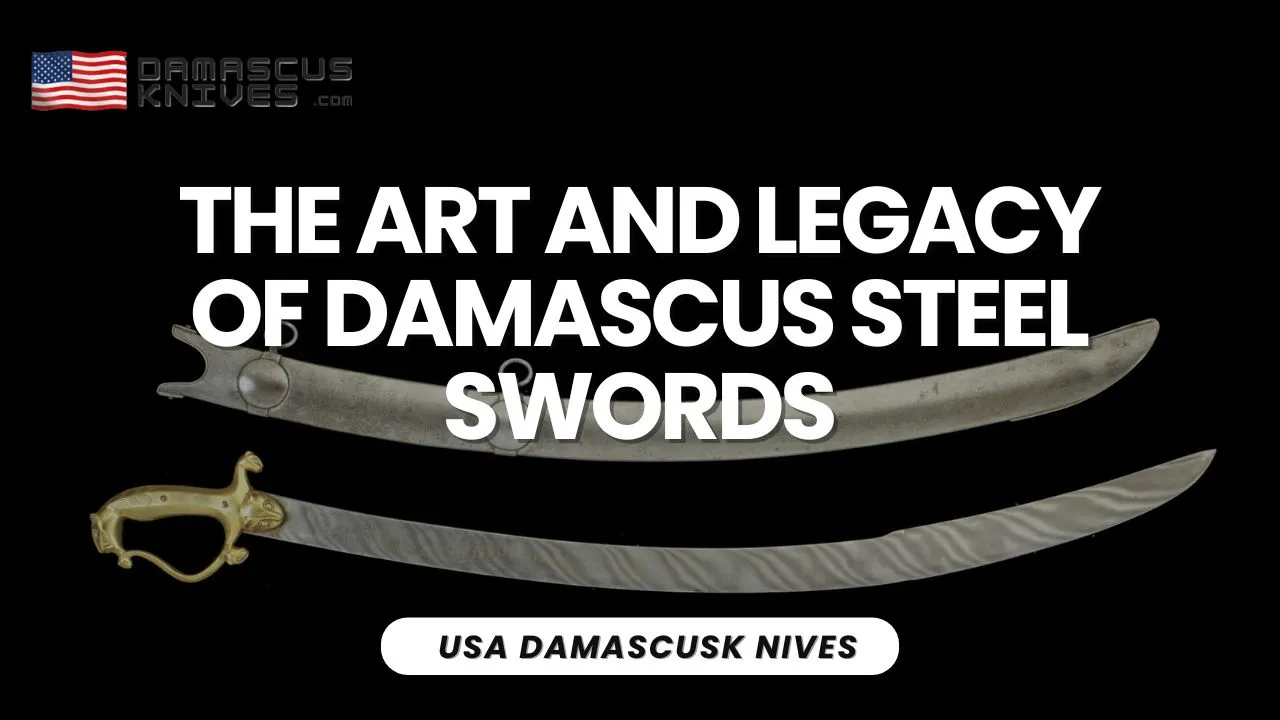For centuries, the Damascus steel sword has captured the imagination of warriors, historians, and collectors alike. Renowned for its exceptional strength, sharpness, and exquisite patterns, this legendary weapon has left an indelible mark on the pages of history. Originating from the Middle East, the art of crafting Damascus steel swords is a testament to the skill and ingenuity of ancient blacksmiths.
Historical Origins:
The roots of Damascus steel can be traced back to the Middle East, with the city of Damascus in modern-day Syria being a prominent center for the production of these extraordinary blades. The technique for creating Damascus steel is believed to have emerged around 300 BCE, reaching its pinnacle during the Crusades in the 11th century.
Craftsmanship and Technique:
What makes Damascus steel swords truly exceptional is the intricate craftsmanship involved in their creation. Blacksmiths of the time used a unique process known as pattern welding. This technique involved layering different types of steel and iron, then forging and folding them repeatedly to create a blade with distinct patterns, often resembling flowing water or twisted vines. The repeated forging and folding not only contributed to the aesthetic appeal but also enhanced the sword’s strength and flexibility.
Exceptional Properties:
Damascus steel swords are celebrated for their exceptional properties, combining sharpness, durability, and flexibility. The unique composition of the steel, with its high carbon content, resulted in a blade that could hold a razor-sharp edge while remaining resilient in the heat of battle. The distinctive patterns, known as Damascus patterns or watermarks, were not just decorative but also indicative of the blade’s quality.
Legendary Reputation:
The reputation of Damascus steel swords spread far and wide, attracting the attention of warriors, nobility, and even poets. The blades were said to possess a keen edge capable of slicing through softer materials with minimal effort. Legends of these swords cutting through other weapons and armor only added to their mystique, earning them a fearsome reputation on the battlefield.
Decline and Revival:
Despite their popularity, the art of crafting Damascus steel swords faced a decline in the 18th century. The exact techniques used by the ancient blacksmiths were lost, leading to a period where authentic Damascus steel became a rare and valuable commodity. However, in the 20th century, attempts were made to replicate the process, leading to a revival of interest in this ancient craft.
Modern Damascus Steel:
Contemporary blacksmiths and bladesmiths have successfully revived the art of creating Damascus steel, using modern techniques to replicate the intricate patterns and exceptional properties of the ancient swords. While the authenticity of modern Damascus steel may differ from the historical blades, the craftsmanship and artistry continue to captivate collectors and enthusiasts worldwide.
Conclusion:
The Damascus steel sword stands as a timeless symbol of craftsmanship and artistry, its legacy echoing through the annals of history. From the battlefields of the Crusades to the collections of modern-day connoisseurs, these legendary blades continue to evoke a sense of awe and admiration. The Damascus steel sword is not merely a weapon but a testament to the ingenuity of ancient blacksmiths and the enduring allure of a craft that has stood the test of time.

